Interview with artist Dolores Justus
Dolores Justus is an artist, marketer and gallery owner living in Hot Springs, Arkansas. Her luminous paintings brighten up any space, which is why they are part of so many corporate and private collections. Dolores’ works have been exhibited widely in Arkansas as well as throughout the South. She is represented by Degas Gallery in New Orleans, LA, L Ross Gallery in in Memphis, TN, Greg Thompson Fine Art in Little Rock, AR and Justus Fine Art Gallery in Hot Springs, AR.
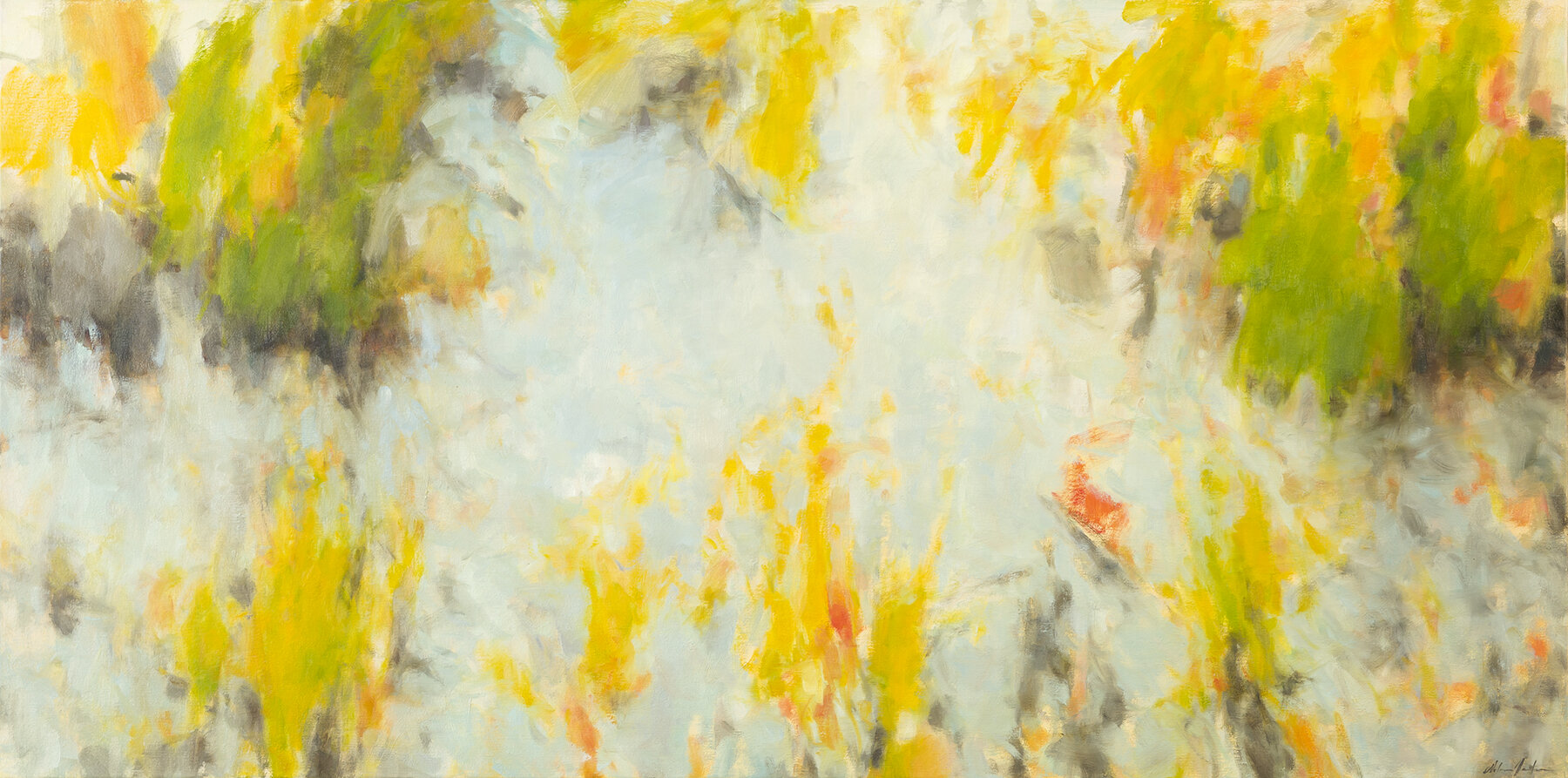
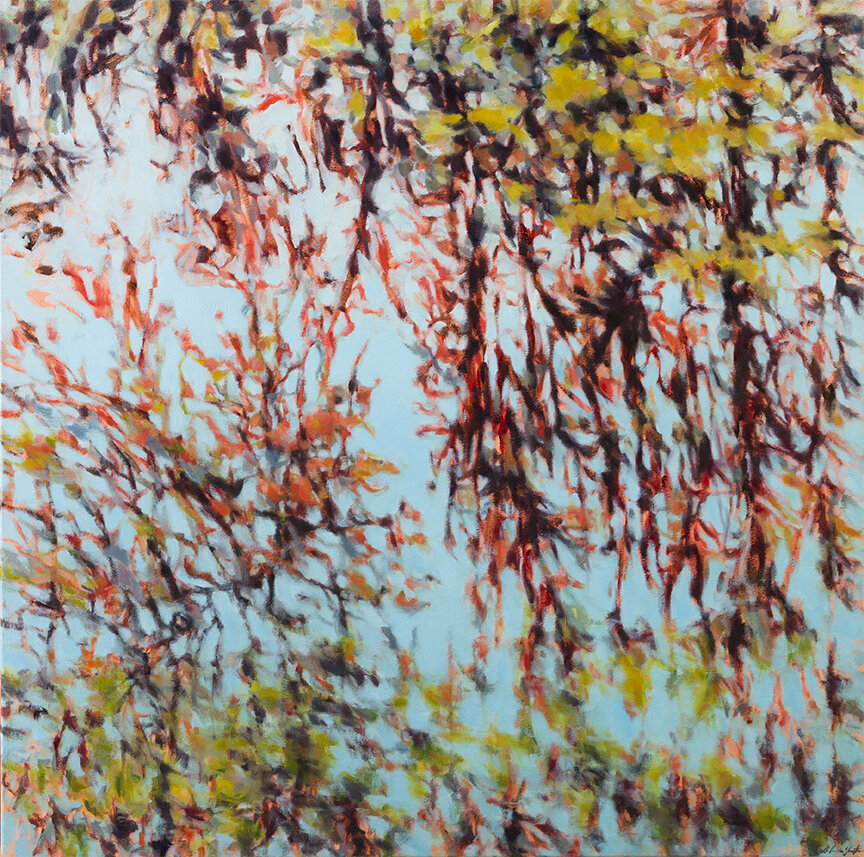
AAS: Dolores, did you grow up in Arkansas?
DJ: I was actually born in Morristown, New Jersey. My Dad took a job with Dow Chemical in New Jersey for a short time after completing a PhD in Chemistry from the University of Washington. My sister and I were both born in Morristown. We returned to the Pacific Northwest, where all our family is from, when my Dad accepted a position with Portland State University where he worked as a respected Chemistry professor and researcher until retirement. My earliest memories began in Oregon and it is where my love of nature took root. It still feels like coming home anytime I am able to visit. My folks split up when I was around seven and both remarried shortly after. My stepdad was transferred to North Carolina where we lived for a year and a half before moving to Memphis, Tennessee. He was a pilot and took a job working with FedEx. I attended Harding Academy from third grade until graduation and completed my first year of college at University of Memphis. I spent the summers back in Oregon with my Dad and stepmom. I married after that first year of college in Memphis and we moved to Little Rock, where I completed a Bachelor of Fine Arts from the University of Arkansas at Little Rock. I worked for Dillard’s in their advertising department while I was a full-time student. We moved from Little Rock to Hot Springs right before my last semester of college. I commuted to Little Rock from Hot Springs during that last semester. I graduated in 1988 and have been living in Hot Springs ever since.
AAS: Was art something you always did as a child?
DJ: I don’t remember a time when I wasn’t creating. I did take a few art lessons and my parents were supportive of my efforts. My Aunt was a very talented artist but didn’t have the opportunity to really develop her skills into a career. When I made my college decisions, I struggled with whether to go into the sciences (which I do have a strong interest in and nearly all my family is in that field). I had done all the college prep work in high school for a science focus, but I knew that I would never get tired of making art and so I chose the other path. I took the graphic design courses in order to have a way to support myself as an artist, but painting was what I was most interested in focusing on. Along with the practical aspects, the graphic design courses were great in teaching composition, color, perspective, and other elements that have also benefited my work as an artist.
“If you stop experimenting with different directions that can mean you aren’t growing as an artist.”
AAS: How do you describe your style of painting?
DJ: I have described my style of painting as lying between abstraction and representation. There are elements of my work that exhibit qualities of expressionism, while the subject matter is mostly representational. Some pieces are quite minimal and tonal, while others exhibit strong patterns and colors. I’ve worried sometimes that my work has too much variance in style, but I think there is a thread that ties everything together. If you stop experimenting with different directions that can mean you aren’t growing as an artist.
AAS: When I first saw The Soul of a Stream I was mesmerized. The movement and color of that piece is just wonderful.
The Soul of a Stream, oil on linen, 40” x 30”
DJ: Thank you! I’ve done a series of grasses in water paintings over the last few years. I drew inspiration for the work from some photographs I’ve taken. (I always work from my own photographs and sketches, unless I’m doing a commission that doesn’t facilitate that.) I use the photos as a loose reference and play with various compositions in my sketches before I begin painting. This piece is actually painted on top of a failed version I had been working on. Some of the previous painting’s colors come through as underpainting and add to the depth in the piece. Some of my favorite paintings are built on top of unsuccessful ones. I think it makes a good analogy for life too—being able to create something positive out of failure.
AAS: Do your abstract paintings just develop as you paint them, or do you sometimes wake up with an image from your mind’s eye that you need to paint?
DJ: Most of the time, I start with my compositional sketches and photo references, but as the piece progresses, I may decide to go a completely different direction than I initially planned. The work often strays so far from the initial concept that you would never connect it with the original reference materials. Other times, I have a concept I want to pursue that has nothing to do with any reference but draws from my own inner landscape. Saying that makes me think of a wonderful Emerson quote, “Though we travel the world over to find the beautiful, we must carry it with us, or we find it not.”
Gathering Gold, oil on linen, 30” x 40”
AAS: I really love your use of color, Gathering Gold, for example. There is so much movement in your brushstrokes.
DJ: Thank you. Gathering Gold is from my series of abstract trees that are inspired by the interaction of light through foliage and forest. Many of the pieces in the series employ vibrant, almost patterned blocks of color. Joy Slips In is much more minimal with the forms of the trees loosely suggested.
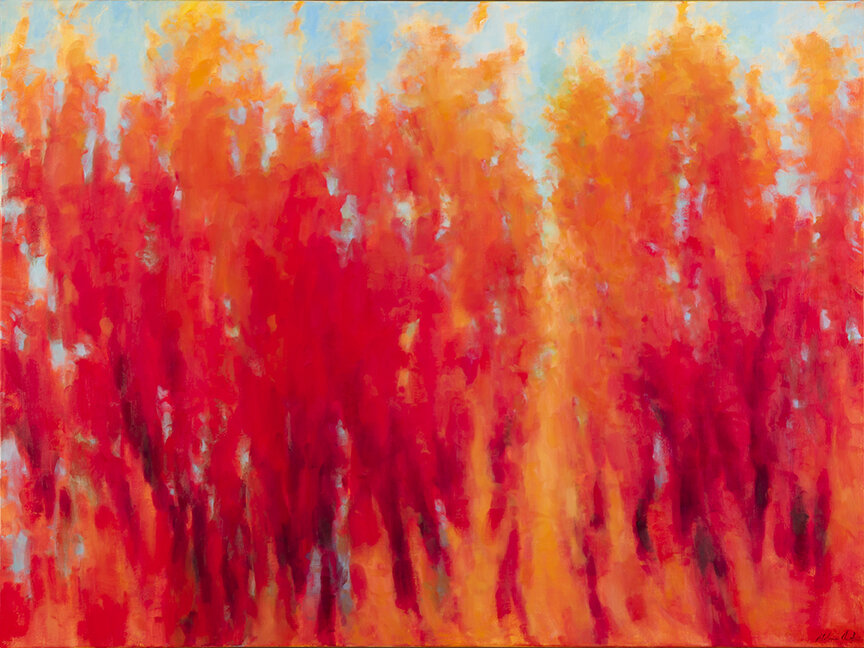

AAS: You do some wonderfully expressive landscapes. Fields of Gold is one of my favorites. Was it inspired by a real place?
Fields of Gold, oil on canvas, 24” x 36”
DJ: Fields of Gold wasn’t inspired by a particular place, but rather many places. It is a good example of how I like to use transparency in my oil paintings. Oil paints vary in their levels of transparency and I like to keep the work in more transparent layers early on because of the warmth that comes through the paint. Once you add opaque elements, it can cover up those luminous areas and so I like to be careful. There are pieces of mine where the work is mostly opaque and that’s of course fine too. There are lots of different directions you can take!
Light on the Hills was based on the hills in Northern Colorado and Mountain Fields from Glacier National Park, but both those pieces evolved into directions far from the places that initially inspired them.
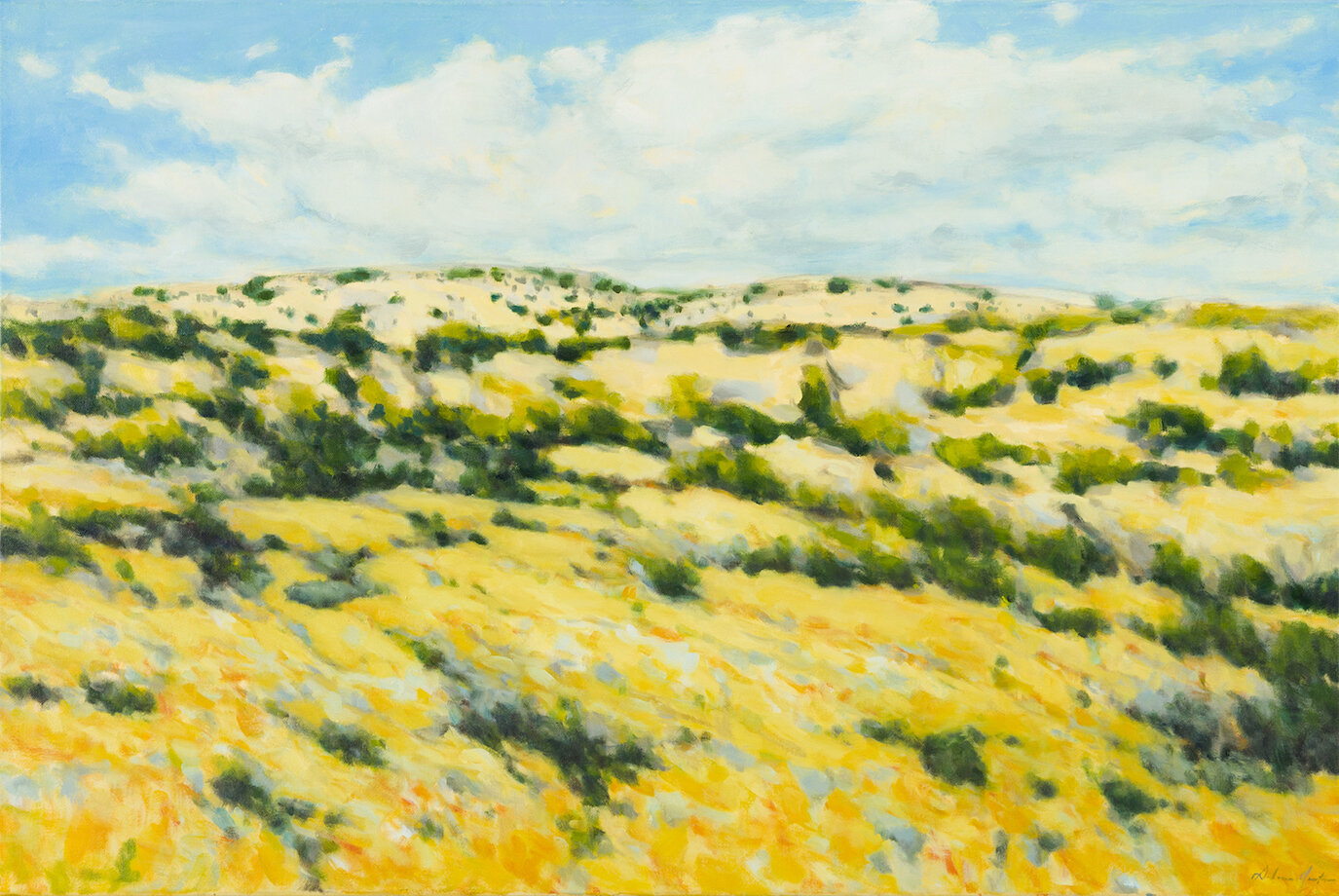
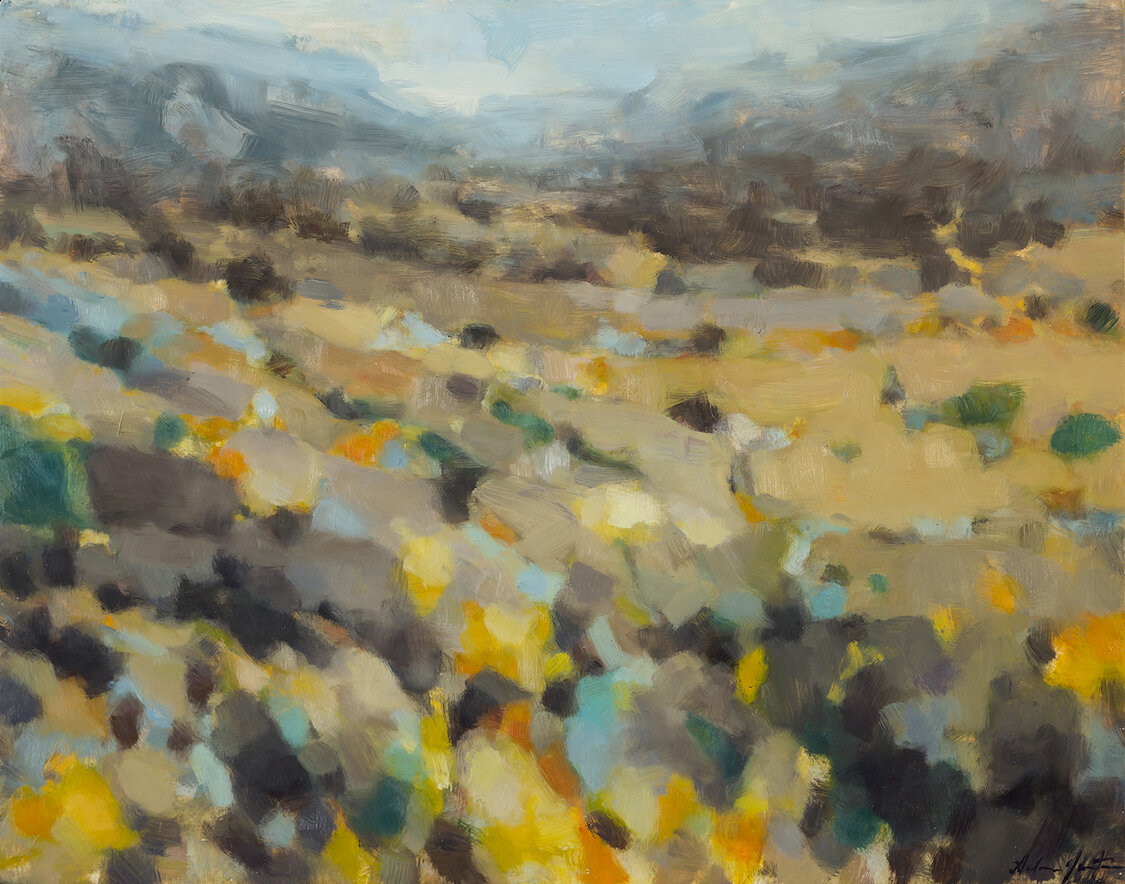
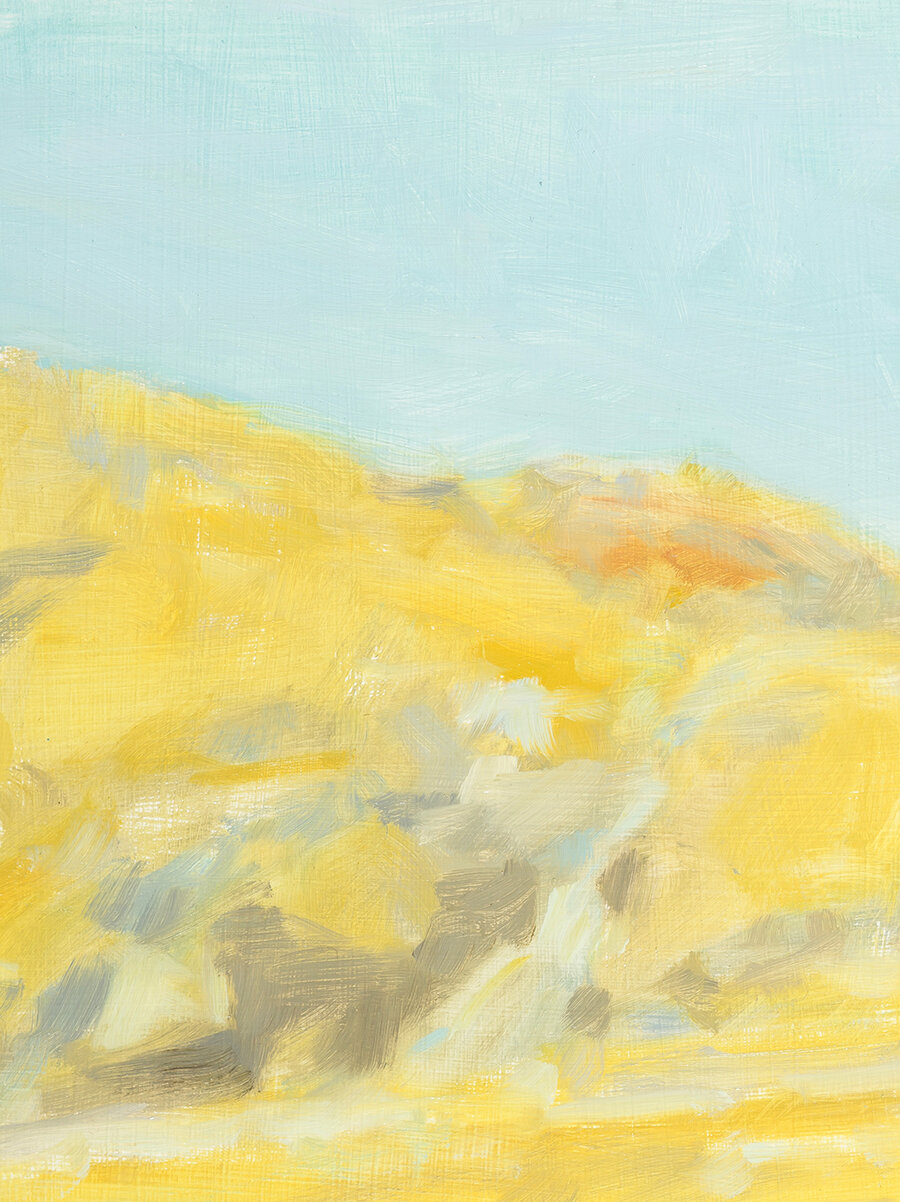
AAS: Tree Line II has a different feel but still with strong movement – I can hear the wind. What is your painting technique for expressing movement?
Tree Line II, oil on canvas, 36” x 48”
DJ: I usually begin by tinting my canvas with a color that I feel captures the overall tone of the piece. I normally let that dry before I rough in the composition with loose brush work. Creating those loose strokes is my favorite part and is the foundation for the movement in the work. I then progress to building layers of color and value until I’m happy. That can take a while! What really drove me to create this piece was wanting to capture the slight curve of the hillside that was visible through the screen of trees.
AAS: You have been very active in the Arkansas Chapter of the National Museum of Women in the Arts.
DJ: The Arkansas Committee of the National Museum of Women in the Arts (ACNMWA) serves as a great advocate for women artists in the state and our nation. I did spend several years serving on the board of directors with lots of other wonderful people who were interested in helping women artists and especially Arkansas artists gain greater exposure and support for their work. When I learned about the National Museum of Women in the Arts and that the number of women artists included in museum collections around the world was so low (less than 10 percent) in comparison to men, I was shocked. There are a lot of exceptional women artists in our state, and it was great to be able to help with an organization that could offer some real benefits to them. For anyone interested in more information about ACNMWA, they can gain an overview by visiting acnmwa.org.
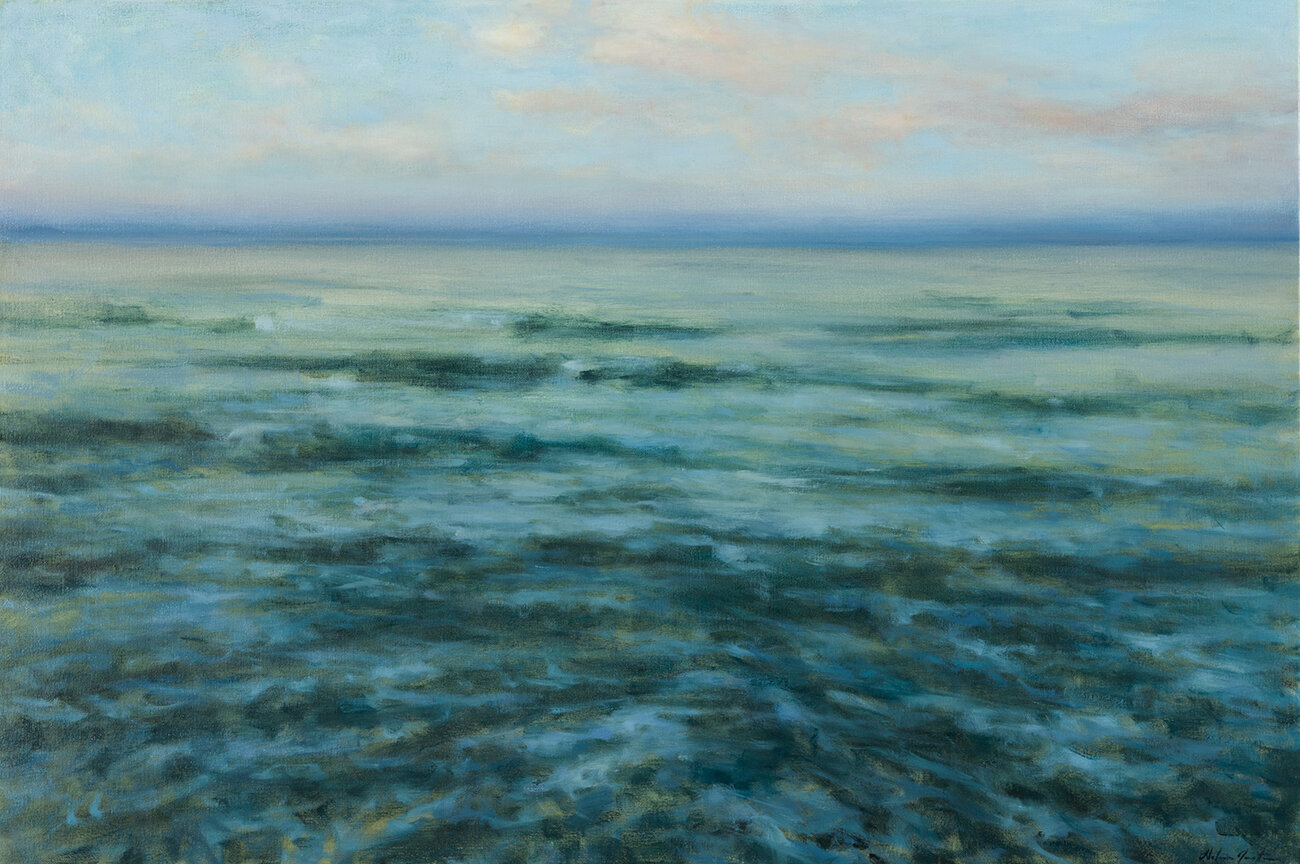

AAS: Let’s talk about Justus Fine Art Gallery. I’m excited to hear that the First Friday Night Art Walks are starting back up again. You have been in Hot Springs for almost 20 years. That’s a long time. What do you think is the secret to the gallery’s longevity?
DJ: Actually, the monthly Gallery Walks in Hot Springs have been continuing through Covid with the exception of April and May being virtual events. However, there were several galleries that just recently opened for Gallery Walk, so it is certainly nice to have more participants! Hot Springs has been hosting Gallery Walk the first Friday of every month since August of 1989. I have operated Justus Fine Art for over 16 years. It is hard to believe it’s been so long. I am so very grateful to all the people who supported the gallery in a variety of ways over the years and for the artists who have shared their work with me. It is a difficult business to survive in even when there isn’t a pandemic. The friendships that have been forged in the process of having the gallery and the ability to present work in a manner that gives it respect and space are very rewarding. Marlene Cowdery has been working part time in the gallery the past few years, which is a huge help. I also continue to operate Justus Design & Marketing in my office in the back of the gallery and offer a wide range of services including logo design/branding, print and digital media design, writing, art direction, UX design, and more. In addition, I also show my own art with other wonderful galleries and exhibit venues throughout the country. It is a lot to keep up with, but I enjoy it.
AAS: Speaking of your exhibitions outside of Arkansas, I have been to the Degas Gallery in New Orleans and your work fits in beautifully there. How did you make the connection with that gallery?
DJ: Degas Gallery contacted me after seeing a painting of mine in Artists and Art Galleries of the South magazine. It is a lovely gallery and it was so great to have a gallery seek me out like that!
“Some of my favorite paintings are built on top of unsuccessful ones. I think it makes a good analogy for life too—being able to create something positive out of failure.”
AAS: Dolores, you have so much experience in working with regular clients and the walk-in buyer. Has the interest in buying works from local artists changed any over the years?
DJ: There are people who are very interested in collecting local artists, but the quality of the work and the viewer’s individual response tend to be the most important aspects in purchasing decisions. Collectors do want to be able to connect with the artists and the gallery is able to provide information about the artists—their inspiration, background, education, processes, and more. We help tell the stories that allow for a greater appreciation and understanding of the art. The majority of the work in the gallery is by Arkansas artists, but there is also work by artists from throughout the country.
AAS: Has the buyer changed over the years?
DJ: We work with individual and private collectors, designers, architects, and corporate collectors, but there isn’t a consistent pattern of purchasing trends in those sectors that I can address. That said, I am happy to see more younger collectors considering purchasing original art. Owning an original piece of art, makes your own life richer. It is like having something living with you that can truly feed your soul. Sometimes clients are insecure when selecting art. We try to reassure them that is really is okay to buy work that you respond to and that brings you joy.


